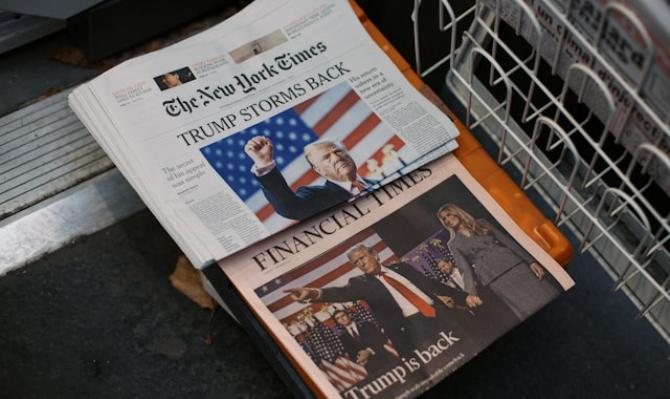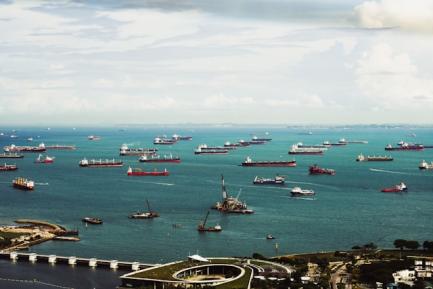Politics is the name of the game: political dynamics and risks in 2019 and beyond
One only has to take a look at the media to realise the rapid changes that are taking place in politics at present. In this context of constant transformation and the cult of the here and now that characterises our society, it is sometimes necessary to take a step back from the intense barrage of news and stop to reflect: what are the characteristics of the current political cycle worldwide, and what are its manifestations? This type of reflection, which is less hurried and more thoughtful, is a necessary exercise to try to understand and contextualise the political dynamics we are witnessing.
The importance of politics in economic analysis became particularly important in 2016 due to the unexpected outcome of the Brexit referendum and the victory of Donald Trump in the presidential elections. Following a relatively calm 2017, in 2018 numerous pockets of tension have arisen at the international level, setting a complicated scene for the beginning of 2019. The onslaught of protectionism in the US, the European authorities’ negotiations with the United Kingdom on Brexit and with Italy regarding its budgets, as well as the European elections in May 2019, are some of the most significant challenges for the year to come.
But what factors lie behind these challenges? In this article, we will consider both the general factors (the new state of politics) and the specific factors (some of the specific manifestations of this new arrangement), as well as filling in the gaps in between to analyse how the current status of politics is contributing to today’s forms of governance. In particular, in order to characterise the current political cycle in Western countries, we analysed the trend in three key variables: electoral volatility, political polarisation and democratic quality.
Electoral volatility, polarisation and democracy: evidence and implications for governance
When we analyse electoral volatility, we note a substantial increase in the number of people who have changed how they vote between one electoral process and the next. This is the result of both the switching of votes between existing parties and increased support for new political formations. In fact, between 2010 and 2015, electoral volatility in Western countries has increased by 68%.1
This political environment characterised by greater volatility can have significant repercussions for how those in government act. In particular, greater electoral competition can lead them to propose more nearsighted policies in an attempt to stay in power, even if this leads to adverse consequences in the medium term for the economy as a whole. That said, this could also lead them to focus on policies and reforms that are important for the medium term, if it is clear that they are not going to be re-elected. Which of these two effects dominates? The evidence seems to indicate that it is the former (see first chart). This is not surprising if we consider that it is quite natural for policy-makers to resort to using a wide range of methods to extend their mandate. In effect, the correlation between the Bertelsmann institute’s policy performance SGI index, which measures the degree of reforms that countries need in the medium term, and electoral volatility is clearly negative.
The second factor that we analysed is the trend in political polarisation, understood as the degree to which political parties stray from centrist positions. The results leave no room for doubt: political polarisation has increased significantly in the advanced countries since the financial crisis. This is intimately linked to the increase in volatility and the rise of new populist formations with positions skewed to the right and left of the political spectrum.
The most interesting consequences of this greater polarisation arise in the trade-off between nearsighted policies and serious reforms. In this regard, the report by Bertelsmann2 documents that the increase in polarisation hinders the scope for broad political consensus, thereby hampering the possibility of implementing reforms focused on the medium term. However, this type of conclusion is not entirely novel: back in 2012, a study3 documented that greater political polarisation was linked to lower quality of government. This effect seemed particularly important in young democracies.
In addition, the rise of populism is shrinking the room for promoting longer-term reforms, instead favouring an increase in nearsighted policies such as protectionism. In this regard, a recent study builds an index that measures the degree of economic protection in the policies of European political parties (including trade barriers and immigration), and another that measures the extent to which policies that are important for the long term are left out. The results show that, on average, the economic protection index of populist parties was 34% higher than the average for all European parties, while their index for leaving out important long-term policies is 24% higher than that of the total sample (see second chart).
A final element that seems to define the latest political dynamics is a deterioration in the quality of democracy.4 For example, between 2006 and 2016, the number of electoral democracies in the world did not increase, while non-democratic forms of government gained support. According to Pew Research, 49% of citizens worldwide would take a good view of a government formed by a committee of experts not approved by the ballot box.
From theory to practice: the (geo)political risks of 2019
The risks of a (geo)political nature that we can foresee for 2019 are nothing more than manifestations of this new political environment, which gives rise to a more nearsighted form of governance. Let us start with the rise in protectionist tensions, one of the manifestations that has already accompanied us in 2018 under the «America First» movement and which, for the time being, seems likely to stick around in 2019. Protectionism consists of short-term measures that can increase electoral support among the citizens for whom it provides protection against outside competition. However, in the medium term, isolationist policies tend to have adverse consequences for economic growth. In this regard, global growth could fall by between 0.1 and 0.6 pps over the next few years, and by as much as 1 pp in the case of the US, depending on the magnitude of the protectionist measures that are finally implemented.5 Looking ahead to 2019, the risks related to the trade tensions between China and the US are a particular cause for concern. Specifically, the tensions could intensify to the point that they end up imposing constraints on investment between the two countries, or the US could end up imposing tariffs on the automotive sector.
In Europe, Brexit and the disputes between the European Commission and the Italian Government on budgetary matters are other examples of geopolitical manifestations brought about by the new political trends, where the emphasis is on immediate political yields. However, the increase in short-term satisfaction, which for many voters means distancing themselves from the EU dynamics emanating from Brussels and, to a certain extent, embracing the slogan «My Country First», is offset by disruptive effects in the medium term caused by a head-on collision with the EU.
Another relevant manifestation of the current political cycle is the way in which politics is questioning the main economic and technical institutions of our economies. There are now even academic articles that are bold enough to propose greater populist political interference in monetary policies. This is particularly counterproductive in a context in which the very objectives of the central banks’ monetary policies are being reconsidered.6
Finally, it should be noted that, although the new political dynamics are worrisome, we must not let ourselves get carried away with pessimism. We have two good reasons for this. The first is that these dynamics should serve as a warning call for the more established political parties to put policy issues on the table for serious consideration. The second is that this new scenario could be part of a process involving the maturity and redesign of our political-economic institutions, in which case the current dynamics could be the turmoil prior to a new status quo that is stronger and more inclusive.
Clàudia Canals and Javier Garcia-Arenas
CaixaBank Research
1. The volatility index is a measure of gross flows of votes between parties. It takes three types of volatility into account: volatility explained by flows towards existing parties, that explained by flows towards new parties and that explained by flows to minority parties (with <1% of votes).
2. See SGI 2018 (2018), «Policy Performance and Governance Capacities in the OECD and EU», Bertelsmann Stiftung.
3. See G. Xezonakis (2012), «Party System Polarisation and Quality of Government», Working Paper Series, University of Gothenburg. The study uses a sample of 39 countries between 1984 and 2009.
4. As stated in the Bertelsmann report specified in footnote 2.
5. The most extreme case would be the result of a 10-pp increase in tariffs between the US and all of its trading partners. Estimates by CaixaBank Research based on measurements by the IMF, the Bank of England and the OECD.
6. See C. Goodhart and R. Lastra, «Populism and central bank independence», Open Economies Review 29, no. 1 (2018): 49-68.





